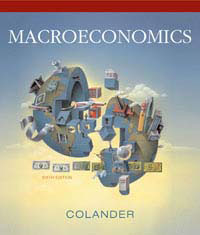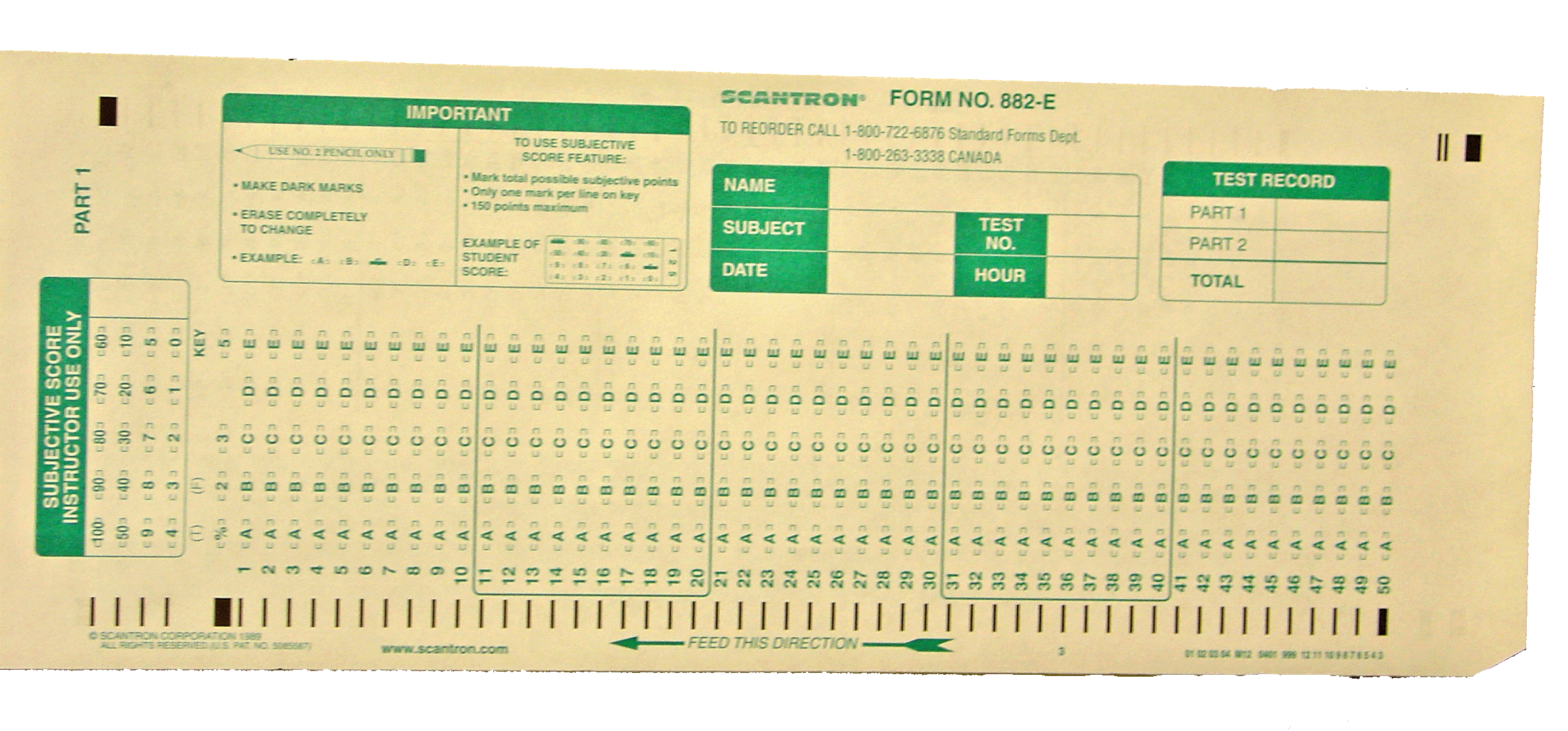
 |
||||||||||
| Page Last Updated November 28, 2007 7:16 AM | ||||
| Syllabus Links | ||||
Find the required and recommended texts and their on-line links |
||||
| Required Texts | ||||
David Colander, Macroeconomics, 6th Edition ISBN 0-07-297885-6 |
||||
 |
||||
Subscription to the The Wall Street Journal (either the hard copy or the on line version is acceptable although the on-line version will be more difficult to use for our purposes.) The 6 week rate is $11.95 |
||||
 |
||||
| Highly Recommended Text | ||||
| The publisher has produced a study guide for the Mankiw textbook: Colander, Copeland, and Gamber, Study Guide for Use with Colander's Macroeconomics Publishers. You can use the study guide on-line by using the fillowing link: Study Guide Link It is also available under Mr. Green's name at the reserve desk at the Browning Library at Dixie State College, and it can be purchased at the bookstore,. (If the bookstore is out of the Study Guide, find Mrs. West of the bookstore staff and get her to order you a copy.) | ||||
| . | Principles of Microeconomics (Econ 2010) is a prerequisite for this course. At a minimum to succeed in this class, you must understand comparative advantage, supply and demand analysis, rival and excludable as characteristics of externalities, and increasing and diminishing returns. | |||
| Electronic Devices |
||||
| Please turn off your cell phones, radios, walkman, and alarms on watches and palm pilots, etc. during class. Electronic interruptions of class will not be tolerated | ||||
Student Responsibilities
|
||||
| . | "An eminent mathematician once remarked that he was never satisfied with his knowledge of a mathematical theory until he could explain it to the next (person) he met in the street. This is hardly exaggerated; however, we must remember that a satisfactory explanation entails duties on both sides.” | |||
| Gifts |
||||
| Gifts from students to the teacher can be misinterpreted. While the thought will be appreciated, Mr. Green cannot accept gifts under any circumstances. It will be better for all concerned if they are not offered. | ||||
| Grading | |||||
| Grades will be calculated using the following formula: Exam Grade . . . . . . . . . . . . . . . . . . . . . . . . . .60% Homework . . . . . . . . . . . . . . . . . . . . . . . . . . . 40% Extra Credit . . . . . . . . . . . . . . . . . . . . . . . . . . . + |
|||||
| Grade Creation | |||||
| All exam and worksheet grades will be determined using one of the following two methods. First, your score on your will be divided by the high score in the class. If your score is within 95% o f the high, you will receive an A. The breakdown will then descend by percentages of the high until the a score that is 60% of the high earns a D-. However, if the average grade for the class, calculated using the first method, is less than a C, a second method will replace the first. Instead of dividing by the high score, the denominator will be manipulated until the average grade for the class is set near C. Further adjustments will be made if there are several sections of the class and significantly differentiated denominators between the classes. If there are multiple sections of the class that use the same measuring instrument, as when all section take the same exam, the average will calculated from all sections rather than from just your class. |
|||||
| Return to the top | |||||
Grading Percentages Breakdown |
|||||
Above 95% |
= A | ||||
| 90% to 94.9% | = A- | ||||
87% to 89.9% |
= B+ | ||||
| 83% to 86.9% | = B | ||||
| 80% to 82.9% | = B- |
||||
| 77% to 79.9% | = C+ |
||||
| 73% to 76.9% | = C |
||||
| 70% to 72.9% | = C- |
||||
| 67% to 69.9% | = D+ |
||||
| 63% to 66.9% | = D |
||||
| 60% to 62.9% | = D- |
||||
| Below 60% | = F |
||||
| Return to the top | |||||
| Exams | ||||
Four exams will be held during the semester. The exams will cover two or three chapters and each will be worth 50 points. |
||||
| Exam Schedule | ||||
Exam 1: Chapters 3, 6, and 7 – 50 points possible |
||||
| Source of Questions | ||||
| The purpose of these exams are to insure that you thoroughly read, study, and understand the material in your textbook. All questions on the exam are written by the publisher, not Mr. Green. Each exam is constructed by a computer program that chooses the questions are random with approximately the same number of questions from each chapter. Literally anything mentioned in the text could be the focus of a test question. You must read the book, maybe several times, to do well. | ||||
| Exam Rules | ||||
| The first three exams will be conducted in the Dixie State College Testing Center located in the Browning building. The fourth exam will be conducted on the last day of class in the classroom. Find the Testing Center Hours using the buttons on this and other pages at this site. Remember that the testing center door will be closed one hour before the scheduled closing time, so plan accordingly. | ||||
| You will have as much time as you need to finish each exam, so long as you do it one sitting. You will be allowed to bring a SCANTRON sheet, a #2 pencil, a calculator, and a blank piece of scratch paper to the exam; in addition you will be permitted to use one 81/2 by 11 inch sheet of paper on which you may write any notes you may need to stimulate your memory. Please leave everything else home. | ||||
 t t |
||||
| Studying for the Exams | ||||
| Mr. Green strongly recommends that you use the Study Guide for Colander's Microeconomics that has been prepared by the publisher to compliment your textbook. Most students using this source score better on their tests. The bookstore will have hard copies or will get them, there is a copy at the library on reserve under Mr. Green’s name, and the URL to the publishers website is included below the pictures of the textbook above. | ||||
| Early and Late Exams | ||||
| Because each exam is available at the examining center over several days, it should not be necessary to ever ask to make one up. Class policy, therefore, discourages make-up exams.. Sometimes students miss exams for reasons beyond their control such as scheduled school sponsored activities or real emergencies. In these cases, a one make up exam per semester will be allowed. If arrangements are made before the exam is scheduled, and if there is a valid – college activity related reason – no penalty will be assessed. If no arrangements are made, a 10 point reduction of the exam score will be imposed. Under no condition whatever will more than one make up exam per semester be allowed. | ||||
| Return to the top | ||||
| Homework | ||||
The homework category has two parts: Wall Street Journal papers and worksheets. (See the Homework breakdown box for the grading criteria.). |
||||
| Homework Breakdown | ||||
| 4 Papers . . . . . . . . . . . . . . .90% 6 Worksheets. . . . . . . . . . . 10% |
||||
| Wall Street Journal Papers | ||||
| Each student must have access to the WSJ. As we progress through the semester, you will be assigned three papers dealing with the principles of economics we are studying. For each of these topics you will prepare a two or three page paper showing an example of a principle of economics illustrated by an article in a current WSJ. Each paper will be composed of a brief summary and a full-blown analysis of articles that relate to the ideas in the material we are studying. (Instructions for and examples of these papers are included in the lecture notes and will be explained when the first article assignment is made.) | ||||
| Paper Topics | ||||
Paper #1: Supply and Demand Dynamics |
||||
| Paper Grading | ||||
| Each paper will be graded A, B, C etc. based on conformity to with the assigned format, the quality of the writing, and understanding of the assigned economic principle. You may rewrite any paper for a higher grade as long as it is submitted before the lnext paper is due. . Any late paper will lose a full grade (A to B, C+ to D+, etc.) and cannot be submitted for a higher grade. | ||||
| Worksheets | ||||
| During the quarter there will be seven worksheet assignments. These will include take home and in-class worksheet assignments and an evaluation of the course. Each worksheet assignment is worth 10 points. Late home work will lose 5 points if it is turned in within a week of the due date. Late homework received more than a week after the due date received no credit. | ||||
| Return to the top | ||||
| Extra Credit | ||||
First, no extra credit will be accepted after the final begins. You can raise your grade a maximum of 2 steps through extra credit. Extra credit can be earned in two ways: reading special books and watching special videos. |
||||
| Books | ||||
| Earning extra credit from books involves three steps: First, select and read books from the Extra Credit Reading List (find this list on the readings page). Second, write a review which is at least 500 words or two full double spaced pages. Third, no credit will be awarded if you have read only one-half, three-fourths or even nine-tenths. Fourth, only the books on the list will count. All the books on the list are available in the library or can be ordered on line or from the bookstore. Some will be available in the bookstore for purchase. Fifth, turn in your review before the final begins or it will not be accepted. Sixth, the paper must by typed and double spaced. Finally, the review must convince me you read the book; you must read the whole book with a reasonable level of understanding. If any of these steps is left out, you will not receive the extra credit. | ||||
| Videos | ||||
| You must watch 14 videos from the Macro video list to qualify for one grade step of extra credit. Watching 13 or fewer does not qualify for any extra credit. All the videos are available on line at the Annenberg web site (see readings page at our class’ website) and they are in the Library; where some are available for overnight checkout. Earning extra credit from videos involves three steps. First, watch videos selected from the Economics USA Videos List for the Macro class (find this list on the readings page). (Warning: There are 14 programs for micro and 14 for macro. Be sure to use the list in finding the right videos.) Second, make 15 copies of the Video Report Form (see below) and use them to review the films as you watch them (typing not required). Third, when you have watched all 14 videos, use the Video Summary Form (see below) attached to this syllabus to list the videos you watched. Use this form must be included as the cover sheet for the 14 video report forms when they are handed in. If you do not submit the cover sheet, or if it is not completely filled out, or if any of 14 sheet is missing, you will not receive the extra credit. |
||||
| Print the extra credit video summary form Print the extra credit video report sheet |
||||
| Return to the top | ||||